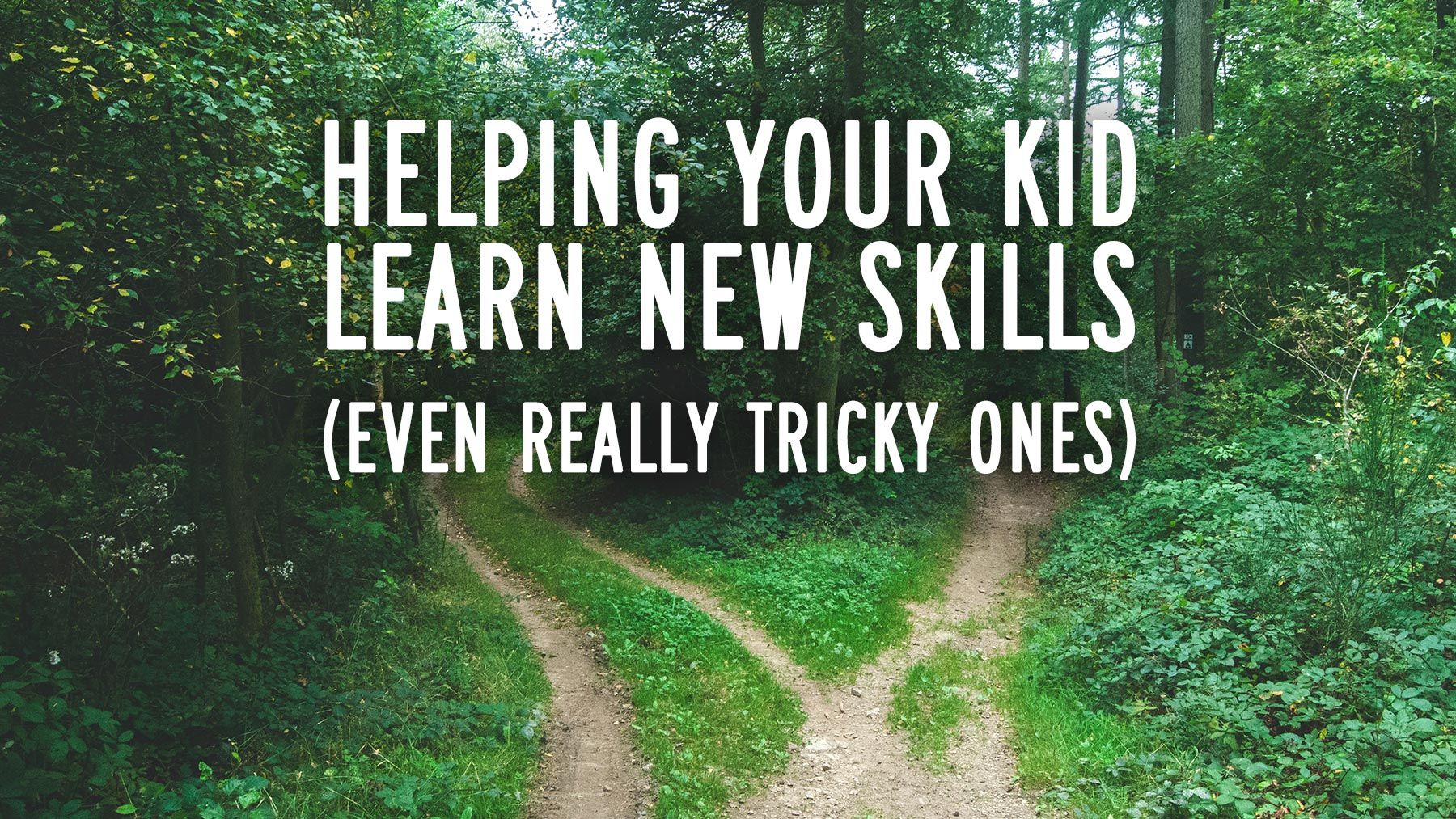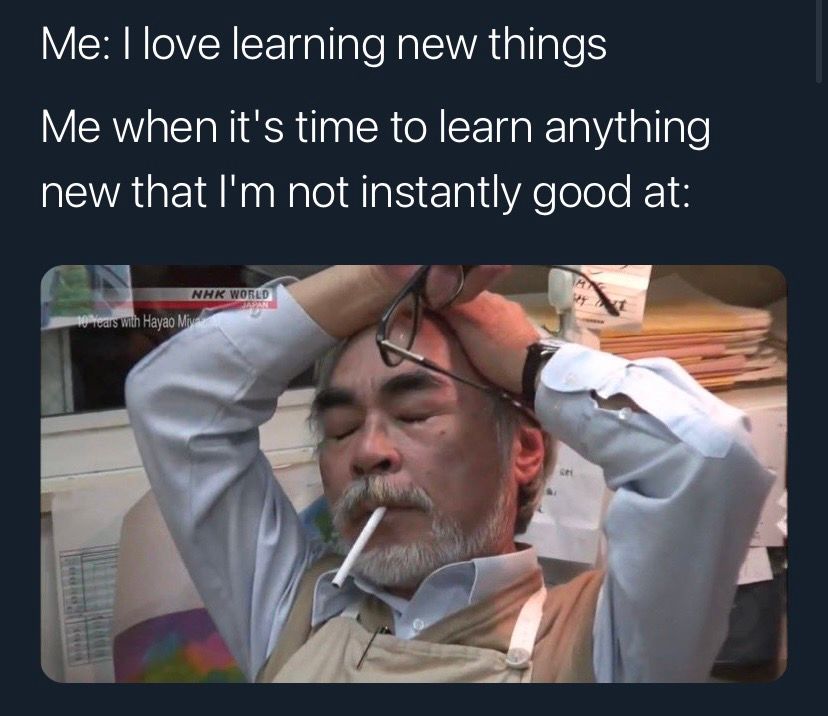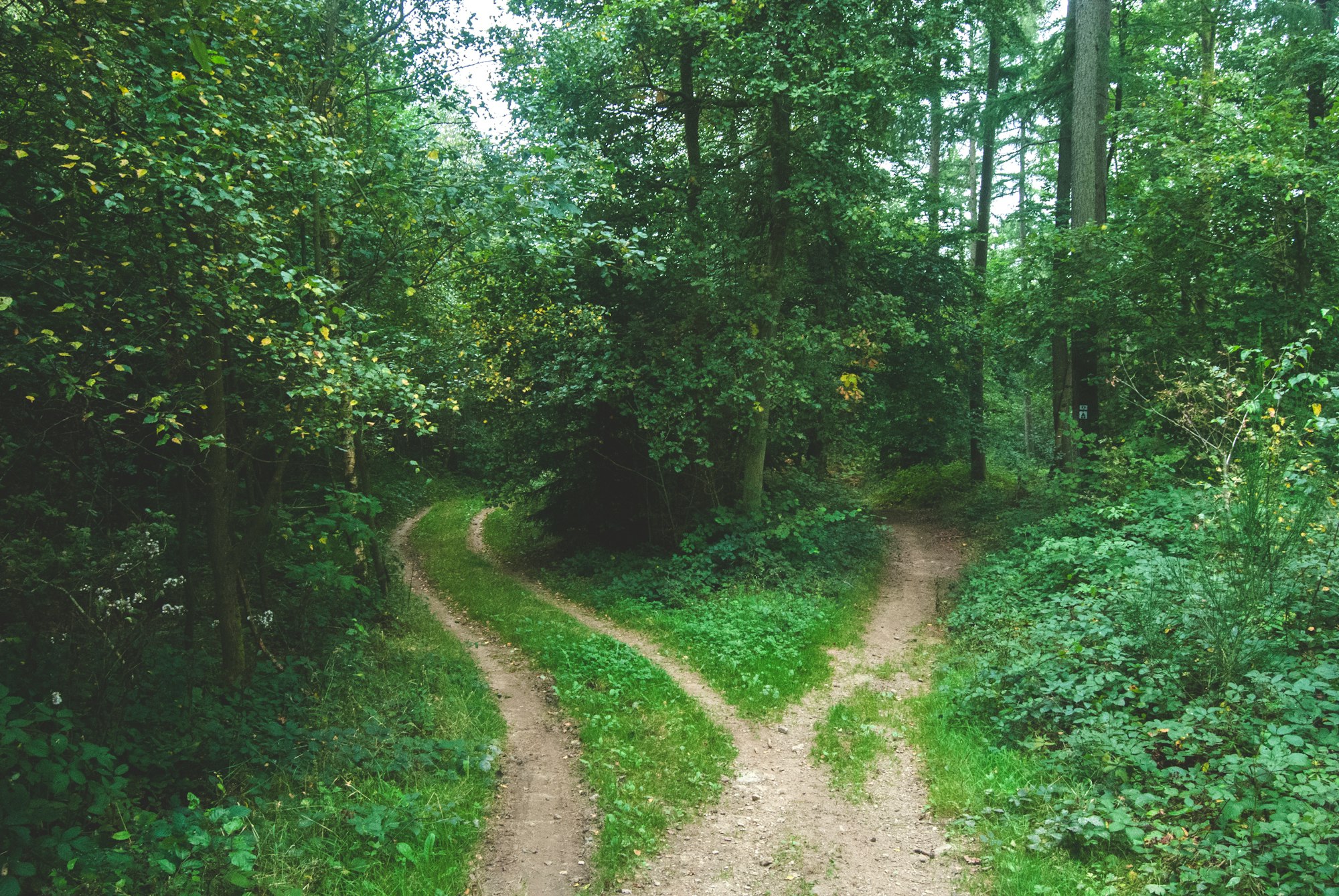Helping your kid learn new skills (even really tricky ones)

Trying new things is uncomfortable.

Trying new things and being terrible at them is really uncomfortable.

Trying new things and being terrible at them, while someone is watching you, is excruciating.

One of the best strategies I have for supporting Wanda in these moments is our forest path analogy.
It starts with a bit of understanding about what's happening in the brain physically when it's developing a new skill. Our brain adds and strengthens synapses between neurons each time a new skill is practiced. As those synapses grow in strength and number, and as myelin sheathing around the axons is thickened, the electrical signals that execute those skills are able to move more swiftly and reliably. In the beginning, it will be hard and slow and full of mistakes, but as we practice, the brain is physically changing its structure to be more efficient, and it gets easier.
(If you'd like to read more about exactly what happens in the brain on a cellular level as it learns, here's a neat article from Scientific American in March 2020: The Brain Learns in Unexpected Ways. For kids, check out the book Science Comics: The Brain, it's excellent.)
So here's the analogy we use (you'll need to temporarily set aside your otherwise quite healthy distaste for paving over nature):

Our brain is like a dense forest.
When we're trying something new, we're treading a brand new route, and it's slow-going. Lots of brambles, our legs get scratched up, it's not comfortable.
We go over that new route a few times, and a path starts to emerge. At first it's barely noticeable, then it become easier to walk along.
We keep working on that path. We widen it a bit. We press the dirt down. We add some gravel.
Eventually, after enough effort has been put into preparing the path, we can pave it. We can widen it again. We can add lanes.
Now it can carry lots and lots of traffic, easily. It has become a superhighway in our brain, and we're able to perform the new skill reliably, will less conscious effort. We're finally really good at it!
But we're not done yet: what about when it's time to develop a new path? It can be tempting to use that great, big, easy highway we've just built. We have to resist that temptation to keep driving the same highways. We need to keep working on those new paths, so we can have lots and lots of highways, many skills.
Having many diverse skills means our ability to solve problems will become much stronger. We'll be able to be more creative, and detect different ways of approaching situations.
We get the most practice with this mindset during math. For instance, multiplication problems could be solved by doing repeated adding. Either way gets the correct answer—but the correct answer isn't the point—the point is to teach the brain the new strategy of multiplication. Then the brain will be able to choose from a number of different strategies when faced with a problem in the future (and that ability to judge which strategy is the best is its own skill to be developed!).
I remind Wanda often of the work she's doing, and the "paths" she's developing. I gently remind her to keep building new paths, and resist that temptation to keep relying on the old tried-and-true ones. This analogy has been a great way to recognize the value in small, incremental steps towards a goal, and a way to look back with pride on all of the work that has gone into developing a new skill once it feels like it's been mastered.
This is just one part of the growth mindset that I try to weave into everything we do, you can read more about that in my earlier growth mindset post.

